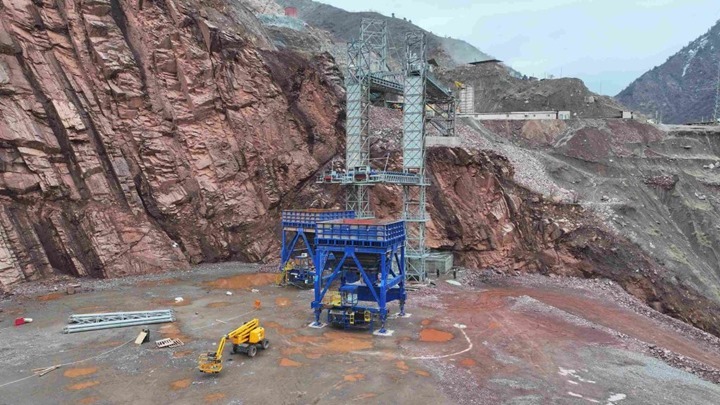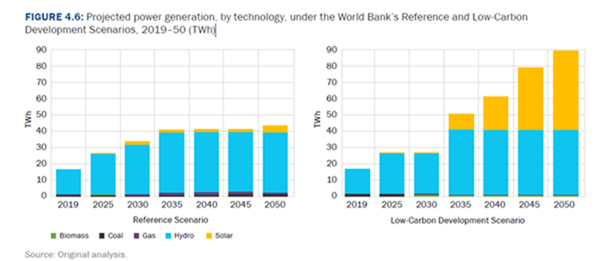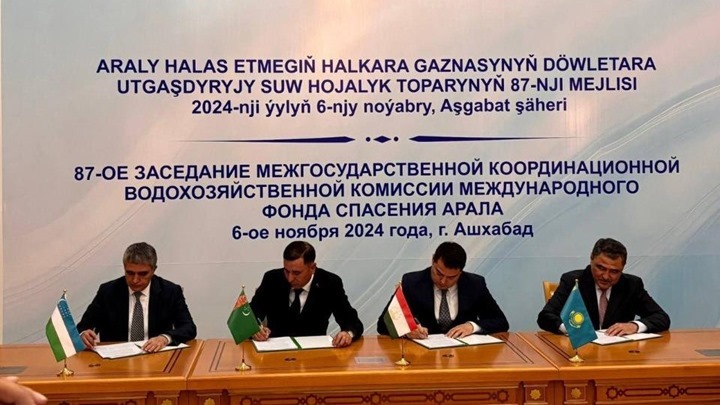Rogun Dam: money, climate, two reports
The international ecological Coalition “Rivers without Borders” has published on its website an express analysis of two just released reports on Tajikistan from the International Monetary Fund and the World Bank in the context of the Rogun Dam construction project. Rivers.Help! offers a Russian translation of the publication of environmentalists:

In the run-up to the COP29 Climate Conference of the Parties, every dodgy bureaucrat is eager to promote their favorite “false solution” to adapt and mitigate climate change. Supporters of the giant Rogun Dam construction project in Tajikistan are no exception to this rule.
The IMF justifies the unjustified
On November 8, the International Monetary Fund (IMF) released a technical assistance report on Tajikistan “Assessment of Public Investment Management with a climate module”. Apparently, due to the IMF’s lack of expertise on this issue, the report does not describe specific mechanisms of the impact of various effects of climate change on the economy of Tajikistan, but at the same time boldly puts forward numerous recommendations for solving problems that have not been properly analyzed.
For example, the report does not explain that since Tajikistan is 93% dependent on hydropower, an increase in seasonal fluctuations in water flow in the Vakhsh River leads to an increase in electricity shortages in winter. The most effective and timely solution to this problem would be to diversify the country’s energy system at the expense of other renewable energy sources, namely solar energy, but this will not happen on the necessary scale due to the fundamental choice in favor of Dams made by the leadership of Tajikistan.
The IMF report clearly demonstrates why this situation has developed (see also the World Bank report below). The IMF points to the fact that when one Rogun Dam project accounts for such a large share of the country’s budget and economy, it poses a significant fiscal risk to the entire national economy. The report shows that most of the capital expenditures of the state budget are directed to the Rogun Dam, and almost nothing remains for other capital investments. As long as the State budget of Tajikistan is spent in this way, the diversification of the energy system is impossible due to the lack of funds for alternative infrastructure.

The chart presented in the IMF report shows that investments in the Rogun Dam have been steadily growing recently, and in 2024 government expenditures amounted to at least 3.5% of the country’s GDP ($450 million), and external financing of the Rogun Dam added another 1.5-2%. At the same time, the state’s capital investments in any other projects not related to the Rogun Dam have significantly decreased in 2024.
However, even the decreasing balance of “non-Rogun Dam expenditures” actually includes investments in large infrastructure projects also related to the Rogun Dam, such as the Obigarm-Nurobod highway or the construction of CASA-1000 and other large power transmission lines.
At the end of 2022, the IMF strongly recommended to Tajikistan that the total cost of the Rogun Dam should not exceed 3% of the country’s GDP. Now the IMF is calling on Tajikistan to borrow billions of dollars from dubious sources to complete the construction of the Rogun Dam.
The IMF also admits that there is no evidence of active management of the investment portfolio, there is no data on the cost and schedule of work, as a result, opportunities for improving the performance of work on the entire investment portfolio are probably being missed: “One of the striking examples highlighting this problem is the Rogun Dam project, one of the largest and most important projects in a country that is experiencing a significant increase in costs and delays in implementation.”
Further in the report, the IMF calls for a detailed assessment of the vulnerability of Tajikistan’s public infrastructure to climate risks: “This analysis could pay close attention to the vulnerability of the Rogun hydropower project, given its national importance and significant investment needs. … This would make it possible to implement targeted measures to improve the sustainability of infrastructure, eliminating the existing gap in quantifying exposure to risks and vulnerabilities — essential elements for improving preparedness for disaster risk management.”
And after all this, the IMF still extols the Rogun Dam as the main pillar of Tajikistan’s development strategy and climate policy.…
Fantasies of the World Bank
The World Bank also released a similar “Report on the climate and development of the country: Tajikistan”. It begins with the statement: “The Government of Tajikistan has developed a strong program for transforming the country’s economy on the basis of a “green” transition, at the center of which is the Rogun Dam …”.
The crooked logic of the World Bank report is to present the Rogun Dam (designed 50 years ago with completely different goals) to its bureaucratic audience as the most important measure to mitigate the effects of climate change and adaptation to them in Tajikistan in particular and Central Asia in general. At the same time, it is never discussed whether there are less destructive, less expensive and faster-built alternatives. The report does not mention that, according to the preliminary version of the Environmental and Social Impact Assessment (ESIA) published on the World Bank website, the huge emissions from the new Rogun reservoir (which emits methane) will cause an increase in greenhouse gas emissions in the Tajik electricity sector by 60% and will not be able to lead to any reducing its carbon intensity.
Unable to substantiate the Rogun Dam construction project economically, the World Bank is trying to play the climate card, promising huge benefits from climate mitigation that will be received around 2040 and later, without mentioning that more than $6 billion needed to build the monstrous height of the Rogun Dam could be used for faster and more effective climate measures that truly meet the needs of climate emergencies.
The World Bank predicts that during the 21st century snowfalls will be replaced by rains, that is, less snow will accumulate, and there will be more runoff from precipitation: “Therefore, the Rogun Dam will strive to compensate for the loss of snow cover by capturing runoff from rains and early snowmelt, supporting clean energy production, despite these changes in hydrology. In accordance with regional agreements on the joint use of water resources signed by the Interstate Coordination Water Management Commission (ICWC), it is expected that the reservoir of the Rogun Dam will reach full capacity of 3.78 GW by 2034. With a storage capacity of 13.3 billion cubic meters, the reservoir should increase the export of clean energy and ensure the resilience of agricultural consumers to drought and climate variability.”
It is alarming that the completion of filling the reservoir of the Rogun Dam with water was announced in this report five years before the most optimistic date (2039) recorded in the current project documentation. Currently, Tajikistan lacks the remaining annual water quota of 9.5 cubic kilometers to fill the Rogun reservoir even by 2039, and the deadline by 2034 means a violation of all existing international obligations among Central Asian countries on water allocation.
According to World Bank estimates, the demand for water for crops at the national level under various climate forecasts will grow by 3-7 percent. The graph presented in the report shows that in five scenarios out of six, the water needs of Tajikistan’s agriculture will exceed 9.5 billion cubic kilometers, which it has the right to withdraw from the Amu Darya basin under ancient agreements on transboundary water use.
However, the World Bank does not discuss the need to revise and improve agreements on the management of transboundary waters in order to avoid tensions and increase efficiency. The World Bank, however, recognizes that the current water distribution relationship will be exacerbated by climate change: “Water security issues in various basins (water scarcity is particularly acute in the Amu Darya basin and less acute in the Syr Darya basin), in turn, will increase the impact on water management methods and, importantly, will affect downstream countries (Uzbekistan, Turkmenistan and Kazakhstan)”.
After all the praise for the giant dams, the World Bank soberly mentions that soon after the completion of construction they may be left without water: “In the long term, designers will also have to take into account the possibility of reaching tipping points, when, for example, an increase in temperature will cause deglaciation and the water stored in the form of ice and snow will end, which will lead to an acute lack of water.”

However, the World Bank’s presentation of a futuristic “Low-carbon Development Scenario” is the most revealing. In the first 15 years (2019-2034), it shows a relatively slow increase in electricity production by 22 TWh, due to the construction of the Rogun Dam (by the way, the project documentation indicates that the filling of the reservoir will last at least until 2039). This is understandable — all the resources of the country are tied to the support of a single megaproject, and other sources of renewable energy are not actively developing. Then, from 2035 to 2050, there is a sharp increase in renewable energy generation due to the development of solar energy, increasing production by 50 TWh. This clearly shows that if, instead of the complete completion of the construction of the Rogun Dam, the installation of solar stations had continued since 2019, the same renewable energy targets in Tajikistan would have been achieved at least a decade earlier. And the winter electricity shortage would disappear in the first five years.
It is extremely sad to see how large financial institutions lie to themselves in order to justify irrational politically motivated decisions on megaprojects made almost 50 years ago – to justify only in order to have a reason to finance them right now.
Rivers without Boundaries


